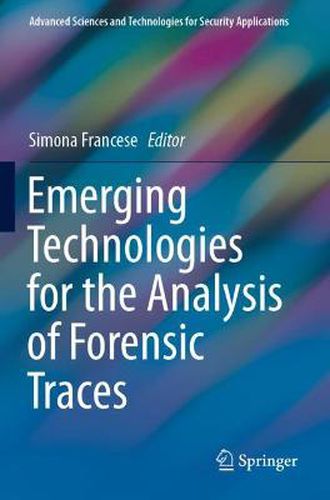Readings Newsletter
Become a Readings Member to make your shopping experience even easier.
Sign in or sign up for free!
You’re not far away from qualifying for FREE standard shipping within Australia
You’ve qualified for FREE standard shipping within Australia
The cart is loading…






This title is printed to order. This book may have been self-published. If so, we cannot guarantee the quality of the content. In the main most books will have gone through the editing process however some may not. We therefore suggest that you be aware of this before ordering this book. If in doubt check either the author or publisher’s details as we are unable to accept any returns unless they are faulty. Please contact us if you have any questions.
This book provides a line of communication between academia and end users/practitioners to advance forensic science and boost its contribution to criminal investigations and court cases. By covering the state of the art of promising technologies for the analysis of trace evidence using a controlled vocabulary, this book targets the forensics community as well as, crucially, informing the end users on novel and potential forensic opportunities for the fight against crime.
By reporting end users commentaries at the end of each chapter, the relevant academic community is provided with clear indications on where to direct further technological developments in order to meet the law requirements for operational deployment, as well as the specific needs of the end users.
Promising chemistry based technologies and analytical techniques as well as techniques that have already shown to various degrees an operational character are covered. The majority of the techniques covered have imaging capabilities, that is the ability to visualize the distribution of the target molecules within the trace evidence recovered. This feature enhances intelligibility of the information making it also accessible to a lay audience such as that typically found with a court jury. Trace evidence discussed in this book include fingermarks, bodily fluids, hair, gunshot residues, soil, ink and questioned documents thus covering a wide range of possible evidence recovered at crime scenes.
$9.00 standard shipping within Australia
FREE standard shipping within Australia for orders over $100.00
Express & International shipping calculated at checkout
This title is printed to order. This book may have been self-published. If so, we cannot guarantee the quality of the content. In the main most books will have gone through the editing process however some may not. We therefore suggest that you be aware of this before ordering this book. If in doubt check either the author or publisher’s details as we are unable to accept any returns unless they are faulty. Please contact us if you have any questions.
This book provides a line of communication between academia and end users/practitioners to advance forensic science and boost its contribution to criminal investigations and court cases. By covering the state of the art of promising technologies for the analysis of trace evidence using a controlled vocabulary, this book targets the forensics community as well as, crucially, informing the end users on novel and potential forensic opportunities for the fight against crime.
By reporting end users commentaries at the end of each chapter, the relevant academic community is provided with clear indications on where to direct further technological developments in order to meet the law requirements for operational deployment, as well as the specific needs of the end users.
Promising chemistry based technologies and analytical techniques as well as techniques that have already shown to various degrees an operational character are covered. The majority of the techniques covered have imaging capabilities, that is the ability to visualize the distribution of the target molecules within the trace evidence recovered. This feature enhances intelligibility of the information making it also accessible to a lay audience such as that typically found with a court jury. Trace evidence discussed in this book include fingermarks, bodily fluids, hair, gunshot residues, soil, ink and questioned documents thus covering a wide range of possible evidence recovered at crime scenes.